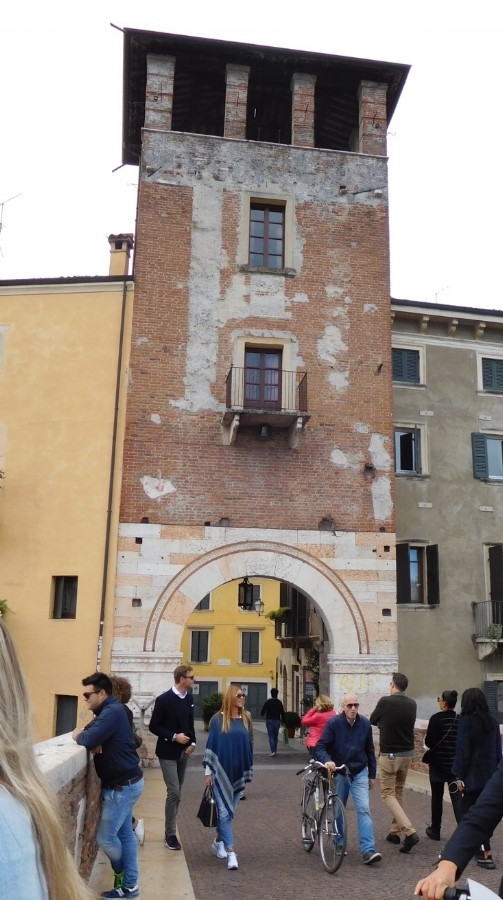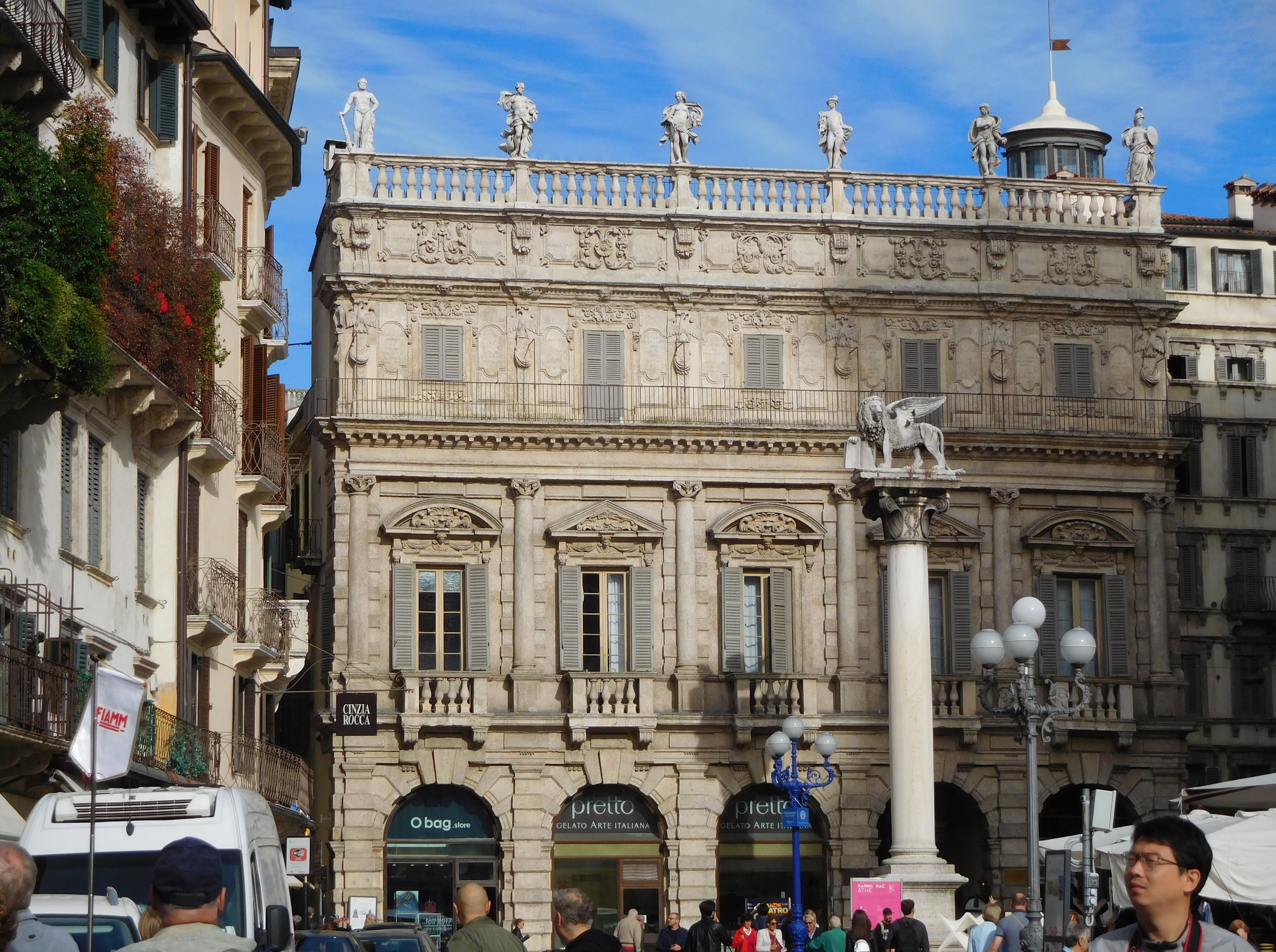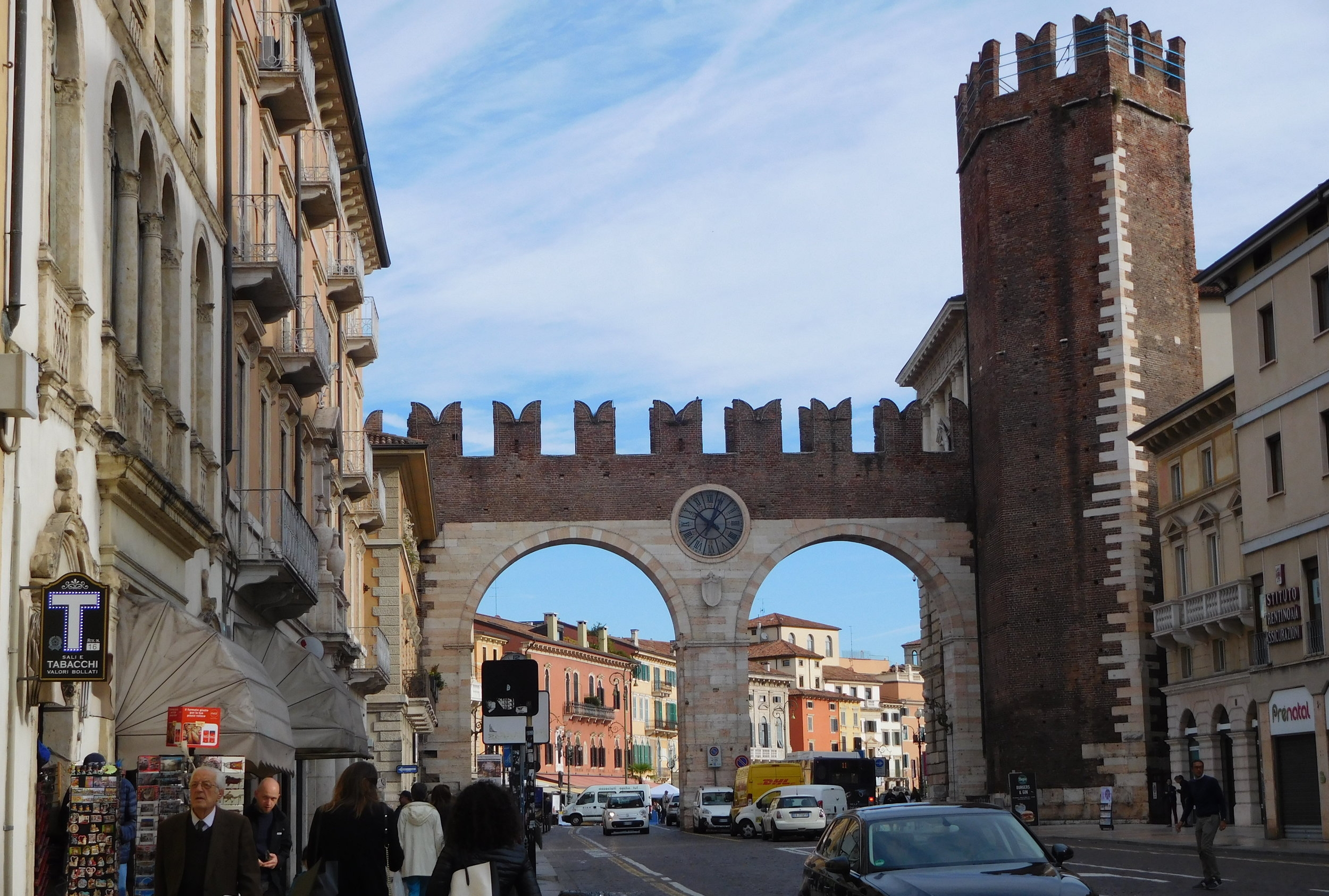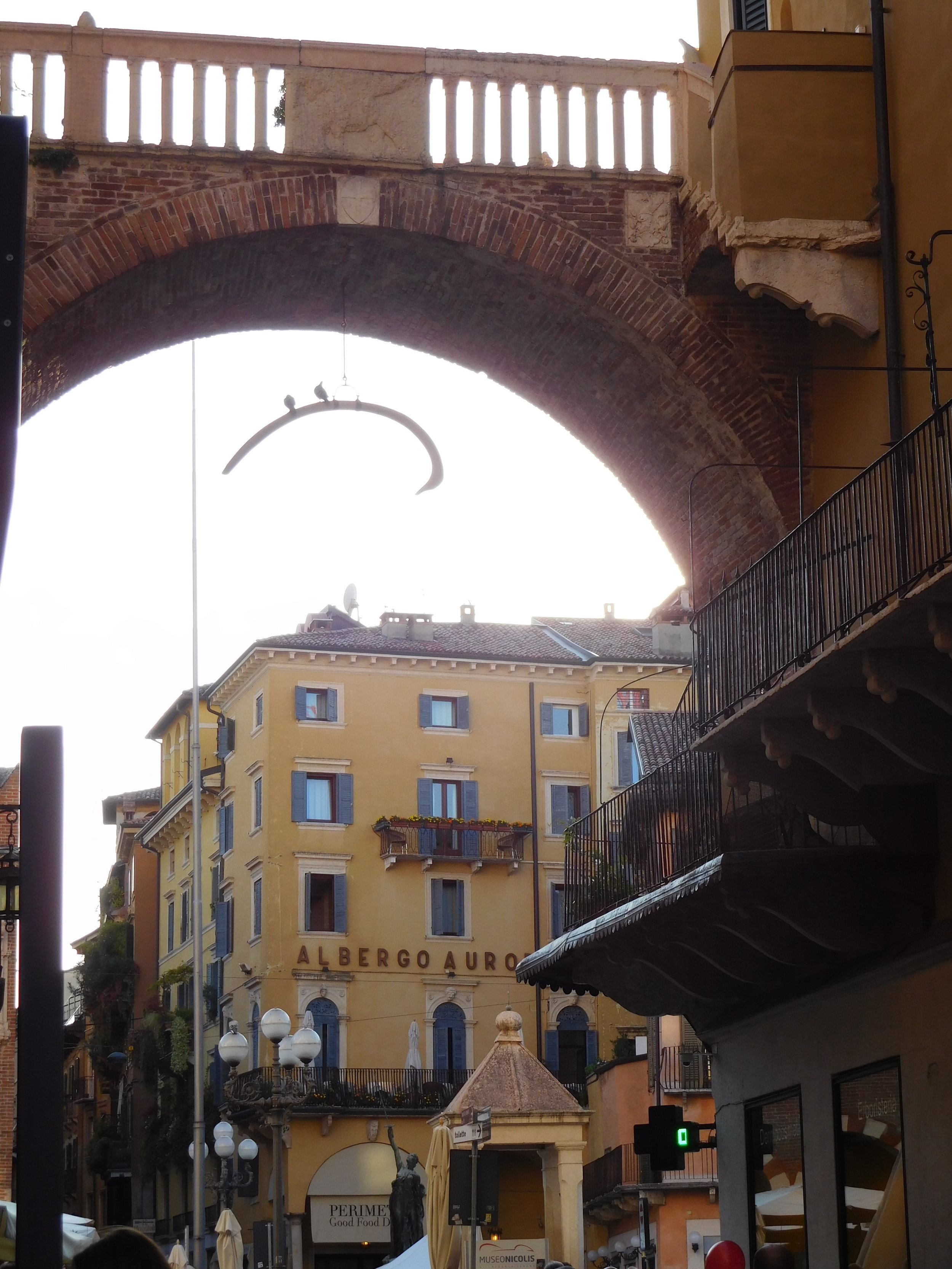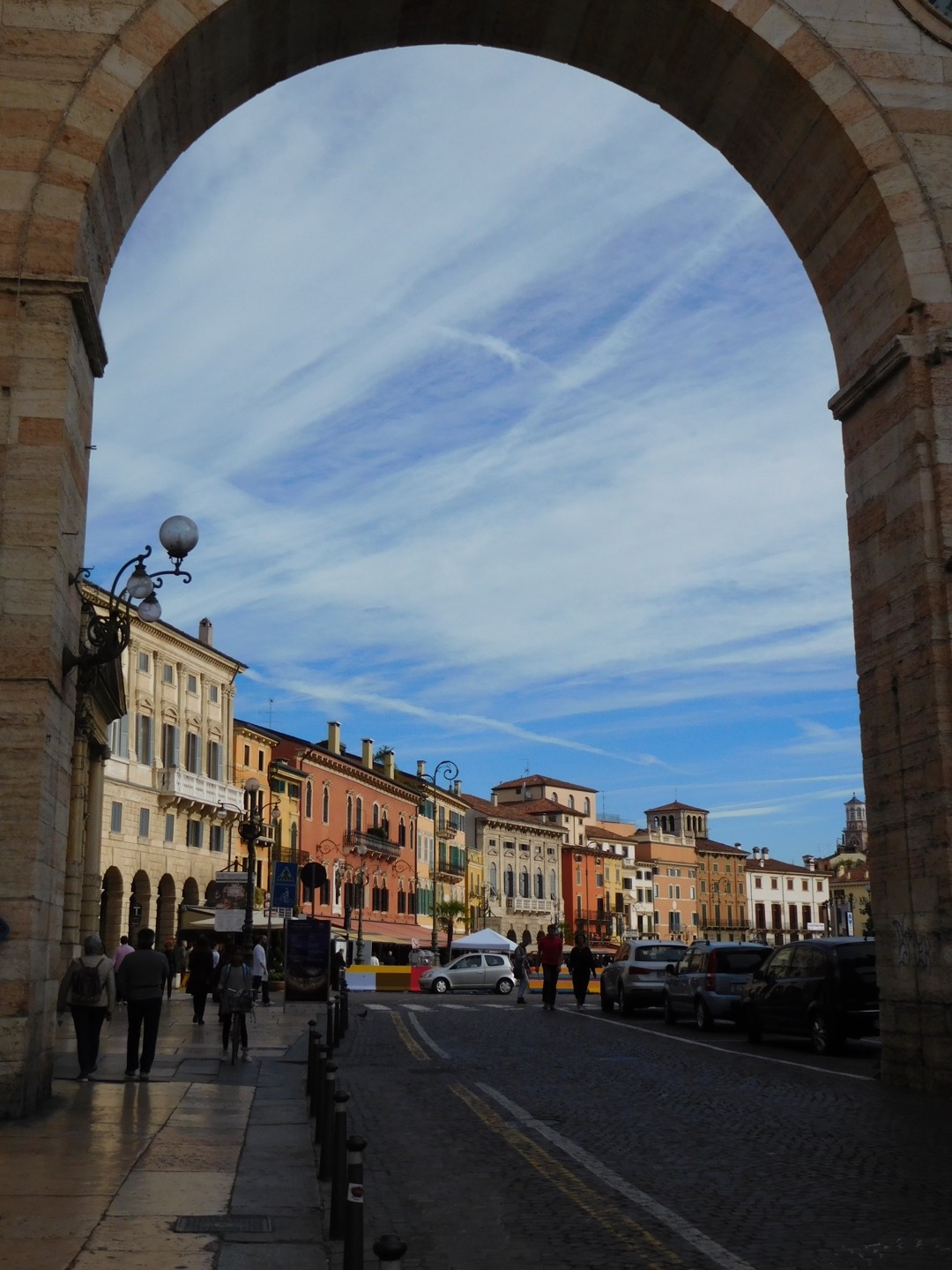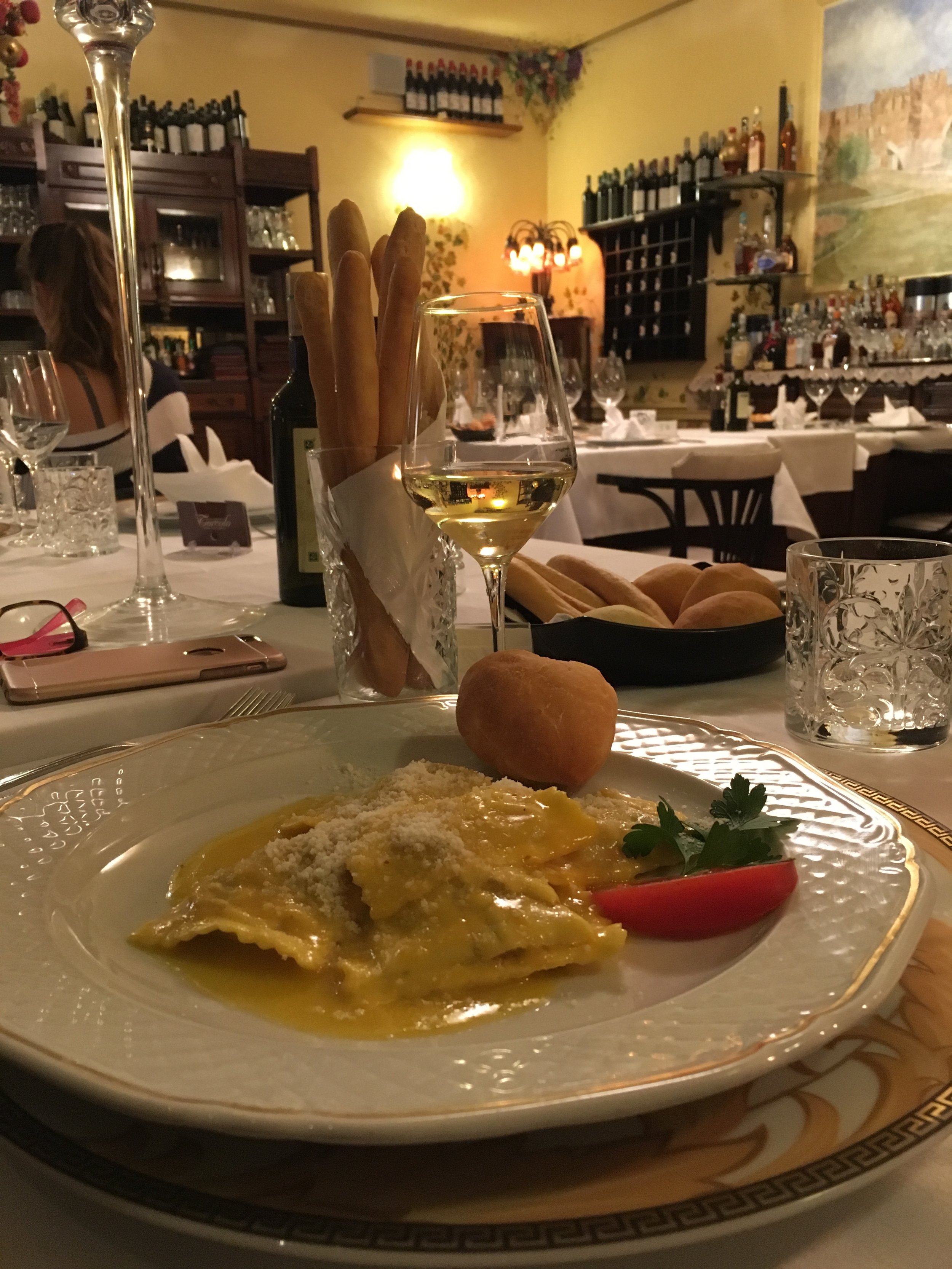The Bridges of Verona
The river Adige in the heart of Verona
The Adige River winds its way through Verona, embracing most of the old city within one of its wide curves. There are numerous bridges over the Adige, connecting the main part of the city, which lies southwest of the river, with the sections that lie to the northeast. Many of these are modern bridges, rebuilt after heavy bombing of the city during World War II. Two of Verona's most important and characteristic bridges, the Ponte Pietra and the Ponte Scaligero, were destroyed during the war but later faithfully rebuilt using original materials recovered from the riverbed. What foresight this careful reconstruction was - and how fortunate that today we are able to walk across these bridges and appreciate their nearly original form.
Ponte Pietra (file photo)
The entrance to Ponte Pietra, through an arched tower in Piazza Broilo
The arched Ponte Pietra (pietra means stone in Italian) is the oldest bridge in Verona, built during the years of Roman rule. It has been damaged and rebuilt more than once due to floods and war. Two of its arches (the white stone arches in the photo) are of original Roman material. The brick arches date from a reconstruction during the 1500s.
Today the Ponte Pietra links the old part of Verona, between the Duomo and the church of Sant'Anastasia on the city side with the Roman Theater, Castel San Pietro, and the churches of Santo Stefano and San Georgio on the far bank. The bridge, with its gentle rise and fall, is beautiful and provides views of towers, church domes, and ruins, as well as long views of Verona along the banks of the river.
The entrance to the Castelvecchio, beyond which lies the Ponte Scaligero
The Ponte Scaligero (also known as the Castelvecchio bridge) is a Medieval structure. It too is an arched bridge, but unlike the more graceful Ponte Pietra, this massive bridge was built as part of castle fortifications and to provide a quick and secure route away from the Castelvecchio - allowing fleeing noblemen to escape across the river. The bridge is entered from within the castle courtyard. It has high brick walls with tall rectangular brick pillars that stand like sentries along the sides of the bridge.
Each pillar is topped with a merlon (an angular brick structure), which gives a sort of winged appearance to the top of the bridge. Between the pillars are open spaces - a climb up on the ledges to look out through these openings provides fantastic views.
Ponte Scaligero, Verona
Verona, as seen from the Ponte Scaligero
Lower in the brick walls of the bridge are rectangular openings that frame stunning views of the city and the river - looking through these was my favorite way to view Verona.
The Ponte Scaligero is an imposing structure, no doubt intended to discourage potential castle invaders. Today it is a peaceful pedestrian walkway and one of the characteristic bridges in the city of Verona. -post by JB


